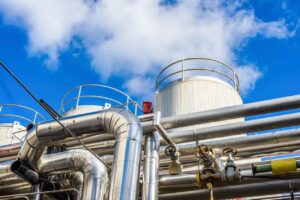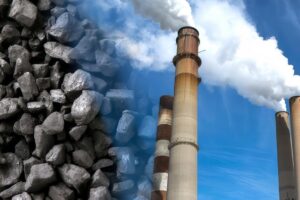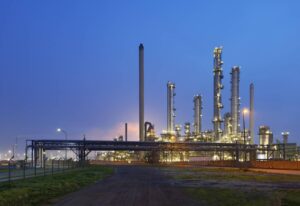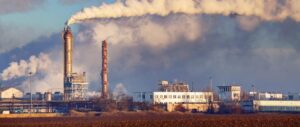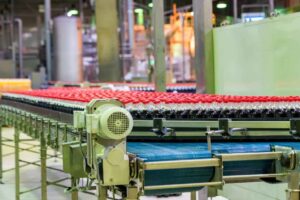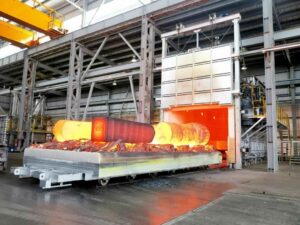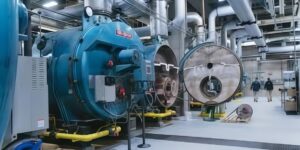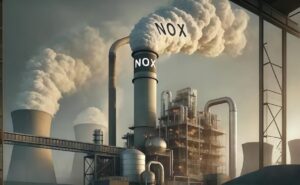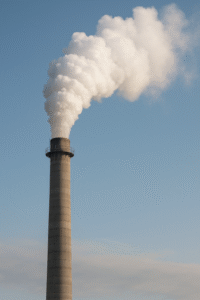Metallurgy refers to the industrial process of mining, selecting, sintering metal ores and smelting and processing them into metal materials, which can be divided into ferrous metal (iron, manganese, chromium, vanadium and titanium) smelting and non-ferrous metal (other than ferrous metal) smelting according to the nature of the smelted metal, and iron and steel smelting, as an important part of the smelting of ferrous metal, occupies an important position in the national economy and national defense construction of the country. In the process of smelting iron and steel and other non-ferrous metals, a large number of gases are generated, mainly including SO2, SO3, CO, CO2, H2, O2, NOx and water vapor. Measuring and analyzing the composition of the above gases by using the complete set of process analysis systems plays a very important role in optimizing the production, improving the quality, energy, and gas recovery, environmental protection and energy saving, safety control as well as improving the economic benefits of the enterprise.
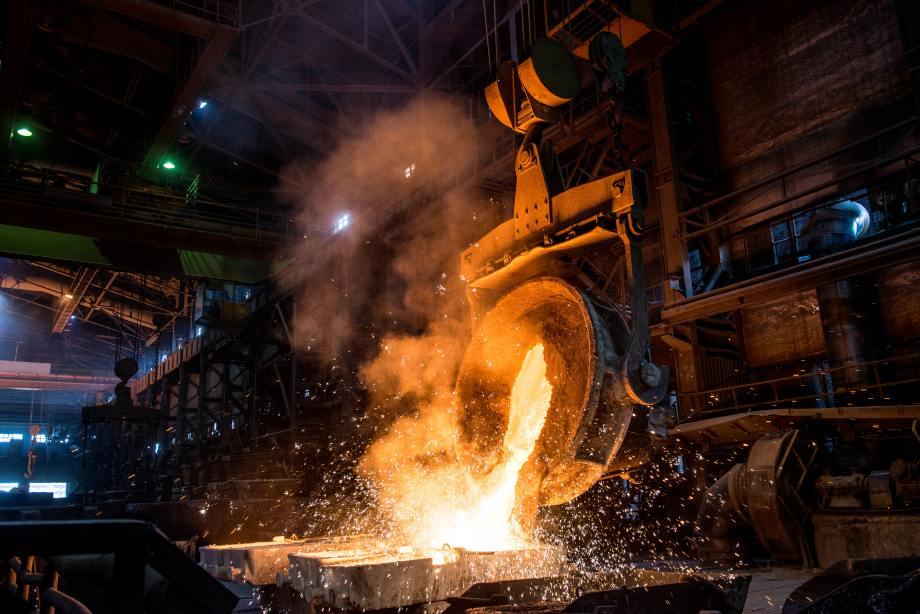
In the modern metallurgical industry, the use of gas analyzers has become an important tool for improving product quality, reducing energy consumption, and ensuring production safety. By monitoring and analyzing the concentration of various key gases in real time, metallurgical companies can optimize their production processes, ensure environmental compliance with regulatory requirements, and improve economic efficiency at the same time. In this blog, we will discuss in detail the specific applications of gas analyzers in the metallurgical industry, including their working principles, application areas, challenges, and future development trends.
How Gas Analyzers Work in Metallurgical Processes
A gas analyzer is an instrument used to detect and quantify the composition of gases. In the metallurgical industry, these instruments are commonly used to monitor furnace gases, emission gases, and gases released during the production process. Gas analyzers can be classified into various types such as infrared gas analyzers, laser gas analyzers, electrochemical gas analyzers, etc., depending on their detection principle. Among them, infrared gas analyzers determine the type and concentration of a gas by measuring the absorption of infrared light of a specific wavelength by the gas; laser gas analyzers utilize laser technology for high-precision measurements; and electrochemical gas analyzers analyze gases by the change in electric current generated by their reaction with an electrochemical sensor.
General Processes in the Metallurgical Industry
The metallurgical industry is a complex industrial process involving the extraction of metals from raw materials to the manufacture of final products. It can be divided into two main categories: ferrous metal smelting (e.g., iron and steel production) and non-ferrous metal smelting (e.g., copper, aluminum, zinc, etc.). The following are general processes in the metallurgical industry, the details of which may vary depending on the type of metal being processed and the production technology. Below is a diagram of the electrolytic smelting process (image source: Britannica)

1. Mining and raw material preparation
The metallurgical process begins with the extraction of ore, which is usually carried out through underground or open-pit mining. The mined ore needs to be crushed, screened, and graded to remove impurities and prepare the raw material suitable for smelting. For some metals, such as aluminum, chemical treatment is also required to convert the ore into a form more suitable for electrolysis (e.g., alumina).
2. Smelting
Smelting is the process of converting ores into metals and usually includes the steps of melting, refining and electrolysis. For example, in steel production, iron ore is first reacted with coke and limestone in a blast furnace to produce pig iron. The pig iron is then further refined in a converter or electric furnace to remove impurities such as silicon, phosphorus, and sulfur, and to add the necessary alloying elements, ultimately producing different grades of steel.
For non-ferrous metals, such as copper, sulfide ores are usually first smelted and converted to copper ice (a solid substance containing copper), which is then refined by electrolysis to obtain pure copper.
3. Casting
Casting is the process of pouring molten metal into a mold to solidify it into a specific shape. In the metallurgical industry, casting is used to manufacture a large number of semi-finished products such as billets, rails, wheels, etc. After casting, the products may require heat treatment such as annealing, quenching, and tempering to improve their mechanical properties.
4. Rolling and processing
Rolling is the process of pressing a metal billet through a series of rolling mills to form a sheet, bar, or wire of a desired thickness. Processing steps may include cutting, welding, stamping, etc. to create mechanical components or end products. For example, steel plates may be further processed into automobile bodies, parts of building structures, etc.
5. Surface treatment
Surface treatment is the step of forming a protective layer or imparting special properties to the surface of a metal product, such as plating and coating. These treatments can improve a product’s corrosion resistance, abrasion resistance, or aesthetics.
6. Quality control and testing
Quality control is integral to the entire metallurgical process. This includes chemical, physical, and structural testing of raw materials, process intermediates, and final products to ensure that the product meets design criteria and performance requirements.
The process not only involves complex physical and chemical changes but also requires a high degree of technical support and precise control systems to optimize productivity and product quality. In practice, each step may involve specific techniques and equipment that require highly skilled operators to manage and control.
The Role of Gas Analyzers In Metallurgical Work
The applications of gas analyzers in the metallurgical industry are wide-ranging and critical, and can be categorized as follows, covering the entire production process from raw material handling to the final product:

1. Feedstock treatment and furnace gas analysis
Gas analyzers are used to monitor and regulate the furnace environment during the raw material preparation phase, especially during the pretreatment of the charge and during the melting process. For example, during ironmaking in a blast furnace, the right amount of oxygen is necessary to ensure that the iron in the iron ore can be effectively reduced. By monitoring the oxygen, carbon monoxide and carbon dioxide concentrations in the furnace, gas analyzers help engineers adjust the air supply and fuel ratio to optimize combustion and metal reduction reactions. This not only affects energy consumption but is also directly related to the quality and yield of pig iron.
2. Emission control in smelting
The smelting process generates a large amount of harmful gases, such as SO2, NOx, etc. The emission of these gases needs to be strictly controlled to comply with environmental requirements. Gas analyzers play the role of environmental regulators at this stage. By continuously monitoring the emission levels of these gases, process parameters can be adjusted or purification measures can be initiated promptly, such as the use of limestone injection systems to neutralize acid gases, to ensure that emissions comply with standards.
3. Refining and chemical control
Accurate gas analysis is critical in metal refining processes, especially when controlling redox reactions. For example, in the converter process of copper smelting, accurate monitoring of oxygen and hydrogen sulfide concentrations ensures copper purification efficiency and controlled sulfur removal. Gas analyzers provide real-time data on these critical gases, helping operators optimize reaction conditions and improve metal purity and yield.
4. Energy optimization and combustion control
Gas analyzers also play an important role in the heat treatment and rolling processes of steel production. By monitoring the combustion gases (e.g. CO, CO2, and O2) in the furnace, the combustion efficiency can be evaluated and the combustion air or fuel supply can be adjusted accordingly to save energy and reduce emissions. This optimization can significantly reduce production costs and improve energy efficiency.
5. Security monitoring and protection
Gas analyzers are also used throughout the metallurgical production process to detect leaks of potentially hazardous gases such as CO, H2S, and other flammable gases. These gases can lead to explosions or poisoning events at certain concentrations, so real-time monitoring of the concentration of these gases is an important means of ensuring worker safety and avoiding major accidents.
6. Overall process optimization
By integrating gas analysis data from all phases, metallurgical plants can achieve broader process optimization. Using modern data analytics, trends and patterns can be extracted from gas analysis results to predict equipment failures, optimize maintenance schedules, and even improve production processes to further increase productivity and product quality.
| point | application function | Monitoring gases | Purpose and effect |
| Feedstock handling and furnace gas analysis | Furnace environment monitoring and regulation | O2, CO, CO2 | Adjustment of air supply and fuel ratio to optimize combustion and metal reduction reactions, affecting energy consumption and product quality |
| Emission control during smelting | Environmental regulation and emissions monitoring | SO2, NOx, H2S, etc. | Ensure that emissions meet environmental standards by monitoring the level of harmful emissions, adjusting processes or initiating purification measures |
| Refining and chemical control | Chemical reaction monitoring | O2, H2S | Precise control of redox reactions to increase metal purity and yield |
| Energy optimization and combustion control | Combustion efficiency evaluation and optimization | CO, CO2, O2 | Evaluating and adjusting combustion efficiency to save energy and reduce production costs |
| Security monitoring and protection | Hazardous gas leakage detection | CO, H2S, combustible gases, etc. | Real-time monitoring of potentially hazardous gases to prevent explosions or poisoning incidents and ensure a safe working environment |
| Overall process optimization | Process data analysis and optimization | multi-gas | Utilize data analytics to extract trends and patterns, predict equipment failures, improve production processes, and enhance productivity and product quality |
In summary, gas analyzers in the metallurgical industry not only improve the economic efficiency and environmental compatibility of the production process but also significantly enhance the safety of the working environment. By providing critical gas analysis data, these instruments support the metallurgical industry’s move towards greater efficiency, safety and environmental friendliness.
Technical Details of Gas Analyzers for Metallurgical Applications
Infrared gas analyzer technical details
Infrared gas analyzers identify and quantify the composition of gases by measuring the absorption of specific wavelengths of infrared light by gas molecules. These devices typically contain an infrared light source, one or more gas chambers, and a detector. As a gas passes through an infrared beam in the gas chamber, gas molecules of a particular composition absorb light of a specific wavelength, and the detector then measures the intensity of the light after it passes through the gas to determine the concentration of the gas.
In the metallurgical industry, infrared analyzers are particularly well suited to monitor the concentration of gases such as carbon dioxide (CO2) and carbon monoxide (CO), which are generated as by-products of the combustion process in blast furnace operations. Infrared gas analyzers provide fast, continuous measurements that are essential for regulating the furnace atmosphere, optimizing combustion efficiency, and reducing energy consumption.
Laser Gas Analyzer Technical Details
Laser gas analyzers use Tuned Diode Laser Absorption Spectroscopy (TDLAS) to detect gas components. The advantages of this technology are its high accuracy, fast response time, and stability in harsh industrial environments. In a TDLAS device, a laser beam is passed through a gas sample, the gas absorbs light of a specific wavelength, and a detector then measures the intensity of the remaining light. By analyzing the absorption of light at different wavelengths, the concentration of a specific gas can be accurately calculated.
In the metallurgical industry, for example in controlling oxygen injection during converter steelmaking, laser gas analyzers can be used to monitor the concentration of oxygen and other critical gases (such as carbon dioxide) in real-time, allowing precise control of the chemical reactions and optimize the quality and mechanical properties of the steel.
Technical details of the electrochemical gas analyzer
Electrochemical gas analyzers quantify gases by measuring the electric current generated when a gas reacts with an electrochemical sensor. This type of analyzer is suitable for detecting low concentrations of toxic or flammable gases such as hydrogen sulfide (H2S) and carbon monoxide (CO). The sensor contains an electrolyte, and when a target gas molecule comes into contact with an electrode, a redox reaction occurs, generating an electric current. The magnitude of this current is proportional to the gas concentration.
In metallurgical processes, electrochemical gas analyzers are primarily used for safety monitoring, such as monitoring potential toxic gas leaks in closed steel mills and non-ferrous smelters. The sensitivity and selectivity of these devices make them ideal for monitoring the safety of the working environment.
The in-depth analysis of these technologies helps the reader to understand the critical role of gas analyzers in the metallurgical industry and their technical complexity, thereby enhancing the understanding of the process control and environmental regulatory capabilities of the industry as a whole.
Specific Cases of Gas Analyzers Used in the Metallurgical Industry
To gain a deeper understanding of the practical application of gas analyzers in the metallurgical industry, the following is a specific case study detailing how gas analyzers were used in a large steel plant to improve energy efficiency and production safety by monitoring and controlling furnace gases.
Case background
The main production process of a large-scale iron and steel plant consists of blast furnace ironmaking, converter steelmaking, and continuous casting. As the blast furnace and converter processes generate large amounts of furnace gas containing CO and CO2, there is not only a risk of explosion and poisoning, but also a waste of energy and environmental pollution if not utilized.

program of implementation
To optimize energy use and improve production safety, the steel plant has installed a series of highly accurate gas analyzers configured at key locations in the blast furnace, converter, and furnace gas recovery systems.
- Blast Furnace Top Gas Monitoring: CO, CO2, and O2 concentrations from the top of the furnace are continuously monitored using infrared gas analyzers. This data helps the operator adjust the raw material feed ratio and air supply to optimize the reduction reaction while ensuring a safe atmosphere in the furnace.
- Converter Furnace Gas Monitoring: CO and CO2 concentrations in the furnace gas are monitored by laser gas analyzers during the steel production process in the converter to assess the efficiency of carbon removal from the molten steel. Correct carbon removal is a key step in ensuring the quality of steel.
- Furnace Gas Recovery and Utilization: The monitored furnace gas is transported to the furnace gas recovery system, where it is utilized as an energy source to be reintroduced into the production line or converted into electrical energy. Gas analyzers are also used in this process to ensure that the furnace gas is used to its maximum energy potential and to monitor for possible hazardous gas leaks to ensure the safe operation of the system.
Results and impacts
By implementing a gas analyzer, the steel plant has succeeded in increasing energy efficiency and reducing production costs. The recycling of furnace gas has reduced the dependence on external fuels while minimizing environmental pollution. In addition, real-time gas monitoring has significantly improved the safety of the production process and reduced the risk of accidents.
- Energy Efficiency Improvement: By optimizing the ratio of combustion and raw materials, the thermal efficiency is improved and energy consumption is reduced.
- Environmental protection: Reduced emission of harmful gases and improved air quality around the plant.
- Enhanced safety: Timely gas leakage detection and establishing a hazard warning system greatly enhance the operational safety of staff.
This case not only demonstrates the key application of gas analyzers in the metallurgical industry but also their importance in improving energy efficiency, protecting the environment, and ensuring production safety. Through the implementation of this technology, companies can achieve sustainability goals while optimizing production processes and improving product quality.
Technical Challenges and Future Directions
The technical challenge
- High-Temperature Resistance of Sensors: High-temperature environments in metallurgical production are a major challenge for gas analyzer sensors. Traditional sensors deteriorate rapidly when exposed to high temperatures for long periods, affecting the accuracy of measurements and the stability of the instrument. Therefore, the development of high-temperature-resistant materials and the improvement of sensor design are current research hotspots.
- Data processing and analytics: As metallurgical plants transition to automation and intelligence, processing and analyzing large amounts of data collected by gas analyzers to adjust production parameters and predict equipment maintenance in real time has become another technical challenge. Utilizing advanced data analytics, such as machine learning and artificial intelligence, can effectively address these issues.
The way forward
- Integration of multifunctional sensing technologies: Future gas analyzers may integrate multiple sensing technologies, such as spectral analysis, electrochemical detection, and physical sensing, to provide more comprehensive and accurate monitoring. Such multi-functional integrated devices can provide multi-parameter analysis on a single platform, reducing equipment costs and maintenance.
- Environmental protection and sustainability: With the global emphasis on environmental protection, the future development of gas analyzers in the metallurgical industry will focus more on environmental protection and sustainability. Advances in technology will help metallurgical plants to further reduce harmful emissions, optimize the use of resources, and move towards green manufacturing.
Conclusion
The application of gas analyzers in the metallurgical industry has greatly contributed to the improvement of production efficiency and the reduction of environmental pollution. Through continuous technological innovation and application optimization, gas analyzer technology will play an even more critical role in future metallurgical production, helping companies achieve sustainable development goals. In addition, with the increasing global concern for environmental protection and resource utilization, the role of gas analyzers will become more prominent, providing technical support for the green transformation of the metallurgical industry.





